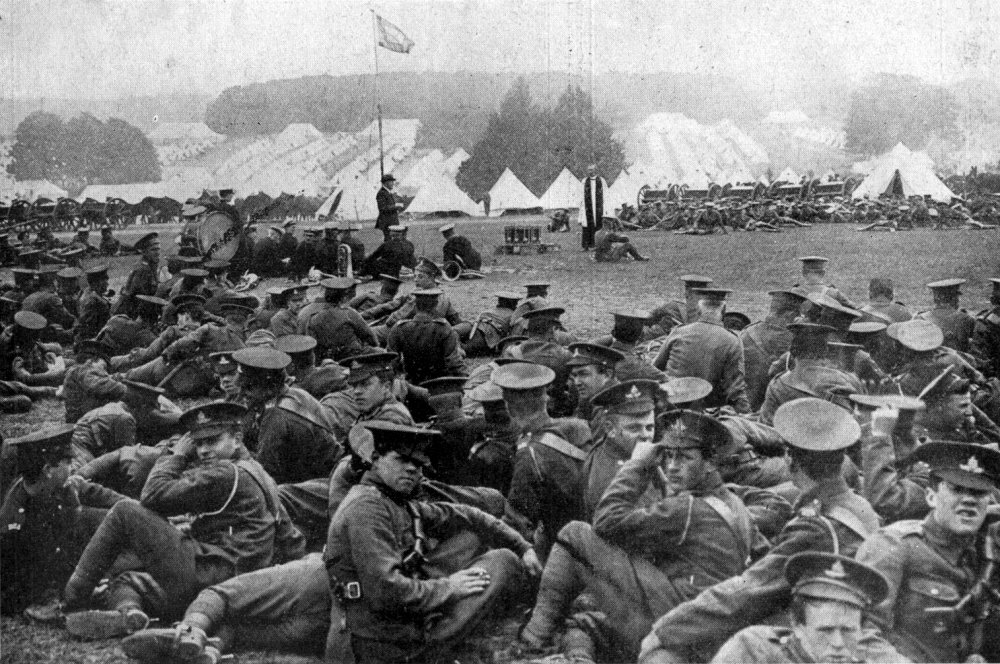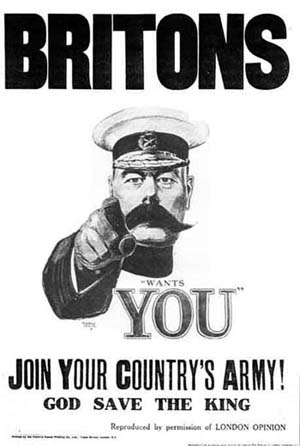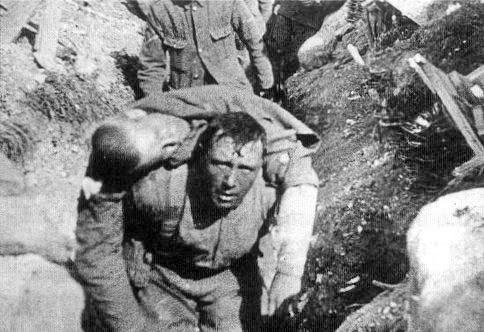The debate in the House of Commons had raged for several weeks. The failures of the coalition government of Prime Minister H.H. Asquith – Gallipoli, Mesopotamia, the failure of the British offensives of the fall of 1915, and a shortage of munitions in the spring of the same year – had been thrown at the PM’s feet. The conservatives in Asquith’s coalition had begun calling for his head, as men he had dismissed from the War Cabinet, like Churchill and Lord Kitchener, attempted to speak directly to the public about what they deemed the PM’s lapses in judgement.
The measure before the House of Commons had been intended to blunt such criticisms. It was a measure Asquith had fought against, both publicly and privately within the War Cabinet. Asquith had tried for months to stall such a vote, commissioning studies in the vain hope of proving it unnecessary. Instead, Asquith’s commissions had proven the opposite. Placed between his principles and his ability to prosecute the war, Asquith chose the war.
The vote wasn’t even close. By a margin of 383 to 36, the Military Service Act of 1916 passed on January 27th. The proud tradition of the small, professional British Army had vanished. Britain had joined the rest of Europe in embracing conscription.
—

The Promise of a “New Army.” Millions of Britons flocked to the call in 1914 and 1915
Since the Battle of the Marne in the fall of 1914, most British authorities – both civilian and military – had understood that the British system of volunteerism had reached its logical limitations in a modern war. The only question was the best way forward.
Conscription had been the answer for all the combatants of Europe, allowing them to field massive peacetime armies with substantial reserves of combat-ready soldiers in case of mobilization. But despite the relative successes of the German, Russian and French models of conscription, the British remained committed to finding their answers elsewhere. H. H. Asquith, and most of the members of his Liberal government, were steadfastly opposed to conscription, preferring to rely on a renewed call for volunteers. Even that measure didn’t meet with full approval from the British Officer Corps as Sir John French, the commander of British forces in France, scoffed at the usefulness of men who hadn’t undergone years of training as British regulars.

The New Army at camp. Britain had to completely revise their training methods to quickly get men in the field. The result was millions of vastly underprepared soldiers
With conscription a politically unpopular option, the call for volunteers went forward. Spearheaded by the Secretary of State for War, Lord Horatio Kitchener, the “New Armies” of volunteers (derisively called “Kitchener’s Mob” by his opponents) managed to be an initial success. 2.5 million Britons heeded Kitchener’s call to arms and the British Expeditionary Force of five divisions that had landed in France in August of 1914 was now five armies totaling 60 divisions. Coupled with troops from the various members of the Commonwealth across the globe, Britain appeared to have her army. The fear of a nationwide conscription appeared to have vanished.
—
In the fall of 1914, the recruitment queues established around the country had teamed with men eager to drive the Kaiser back into Germany. A year later, the queues were practically empty.

Lord Kitchener’s personal appeal – the extremely popular Secretary of State for War would lose his post in 1915 and his life in 1916
Transport ships filled with the dead and wounded returning home told a story of the Great War far different than the one the newspapers had portrayed. Even with the massive recruitment efforts, Britain was en route to a major manpower shortage, having suffering a million casualties in 1915.
Supporters of the volunteer drive suggested the lack of new recruits was simply due to an overall lack of eligible soldiers. The population of Britain in 1914 was only 46 million, and over 3 million men were already under arms. Unless the generals in France or the politicians in London wanted women, children or old men in the army, Britain had no more left to give – or so the theory went.
Kitchener and Edward Stanley, the 17th Earl of Derby, thought differently. Stanley, Asquith’s new head of recruitment, proposed a new plan of obtaining volunteers – healthy men, married or not, between 18 and 41 would be forced to “attest” to their willingness to serve in the army. Recruiting officers employed thousands of new “trackers” to find men at missing or invalid addresses. Even women, technically not allowed to work as recruiters, were employed to browbeat men to go and “attest.”

Derby scheme – the man behind the idea was not well-respected. Gen. Douglas Haig said of Derby: “[he’s] like a feather pillow, bearing the mark of the last person who sat on him.”
Given such options, 38% of single men, and 54% of married men attested “no” to the Derby’s Scheme. Despite the pressuring tactics, only 318,000 more men willingly joined the ranks. The appeal to King and Country had been exhausted. Now Britain had to turn to force.
—

New “attestees”; new recruits – men could be fitted for a uniform the moment they attested and shipped off for training
Armed with the Derby Scheme reports in hand, H.H. Asquith spoke before the House of Commons on January 5th, 1916 to argue for a nationwide conscription.
According to the reports, 650,000 able-bodied men had declined to serve or attest at all – and this was only from two months of the program. Lord Kitchener’s words of warning in 1914 rang in the ears of many of the MPs, that the war would be won by the nation that came up with “the last million men.” Still, there were tangible concerns over the process conscription would take. Would married men be forced to serve? What about men in key industries? Who would work in the factories when most of the able-bodied men had gone? And who would make the judgement calls on these decisions?
The answer to almost all of these questions would be passed down with the establishment of local tribunals. Small, make-shift committees of 5-to-10 local men, most of them past the eligible ages of service, would accept the responsibility of reviewing petitions for exemption from conscription. Overseen by one military representative, to ensure committees weren’t excluding too many men or abusing their newfound authority, the tribunals would serve as bureaucratic middlemen to simplify the conscription process.

The local tribunals were viewed as something of a joke to the British public. Men had to defend their contribution to the war effort. Ultimately, few men were exempt from service
They didn’t. Neither the Members of Parliament, nor the local tribunals had any indication of the push-back conscription would receive. 765,000 men filed for exemption in the first six months, overwhelming the system. Despite the supposed simplicity of conscription’s eligibility – single, healthy men 18-41 had to serve – the boundaries, especially for hardship exemptions, were difficult to determine. One father petitioned on behalf of his 18 year-old son to stay and work on the family farm. His eight other brothers were already serving and without the remaining son, the family wouldn’t be able to survive. The boy was given a 3-month exemption before shipping off to France. An older widow begged the tribunal not to take her 11th son – the 10 before him were already in the army. The 11th son served nevertheless.
There was political fallout as well. 200,000 demonstrated against the Military Service Act in Trafalgar Square in April of 1916. Irish opposition to the concept was so significant that Parliament decided that conscription didn’t apply to Ireland – further enraging men back in Britain. And while men couldn’t legally buy their way out of conscription, men of means still managed to avoid enlistment by having their claims of exemption approved. With no national standard in place, healthy 18 year-old university boys might escape conscription while 41 year-old bricklayers with bad backs found themselves in a trench.

Determining eligibility – British recruitment standards were ill-defined in the beginning. Plenty of older men, in poor physical shape, nevertheless fought in the trenches
Worse, the Military Service Act still hadn’t addressed the manpower needs of the army. With men avoiding conscription, or tying up their eligibility in protracted exemption hearings, only 1.1 million men would wind up in uniform by the end of 1916. Conscription would only reach those numbers due to striking down the marriage exemption and, eventually, moving the age restriction up to 51. By the end of the war, conscription would bring 2.5 million more men into the British Army – the same number over nearly three years that Lord Kitchener’s patriotic push had generated in the war’s first 12 months.
—
The men conscripted in early 1916 would be invaluable in a year of bloodletting for the British. Over 57,000 men would become casualties at the Somme in France…on the first day of a battle that raged for almost five months. Such outcomes insured that Britain would be in a perpetual manpower shortage throughout the war.

A wounded Briton being carried through a trench at the Somme. The Entente would lose nearly 800,000 men in the battle
Conscription would take many lives, including the political life of H.H. Asquith. Despite supporting the measure, Asquith was repeatedly criticized for not implementing conscription sooner, or backing it with more vigor. A cautious man by nature, Asquith’s critics – both in the government and military – questioned his fitness to led a wartime coalition. With the Liberals furious that Asquith was ignoring social programs and advancements (and still frustrated that he supported conscription), and Conservatives outraged at his handling of the war effort, Asquith had few political allies left.
By the fall of 1916, amid the Somme, Asquith appeared a broken man. Critics claimed he was too distracted to lead. And in part, he was. His son, Raymond, had been among those killed at the Somme. Raymond Asquith had been 37 years old, leaving behind a wife and three children. A heartbroken father, Asquith inscribed on Raymond’s headstone: “Small time but in that small most greatly lived this star of England.” The line was from Shakespeare’s “Henry V”, a story of warrior king who had died in his thirties after campaigns in France.
Within a few months, Asquith was gone as Prime Minister. He had nothing left to give Britain.

In a fit of irony, the British used press gangs for sailors during the Napoleonic Wars, so they had experience with conscription for naval service. But the conditions of the land war in France and the horrible leadership of the Expeditionary Force rightly didn’t inspire the Britons who hadn’t enlisted in the first wave of patriotic fervor. Not that I blame them: following idiots into battle is little less than suicide.
Pingback: In The Mailbox, 01.28.16 : The Other McCain